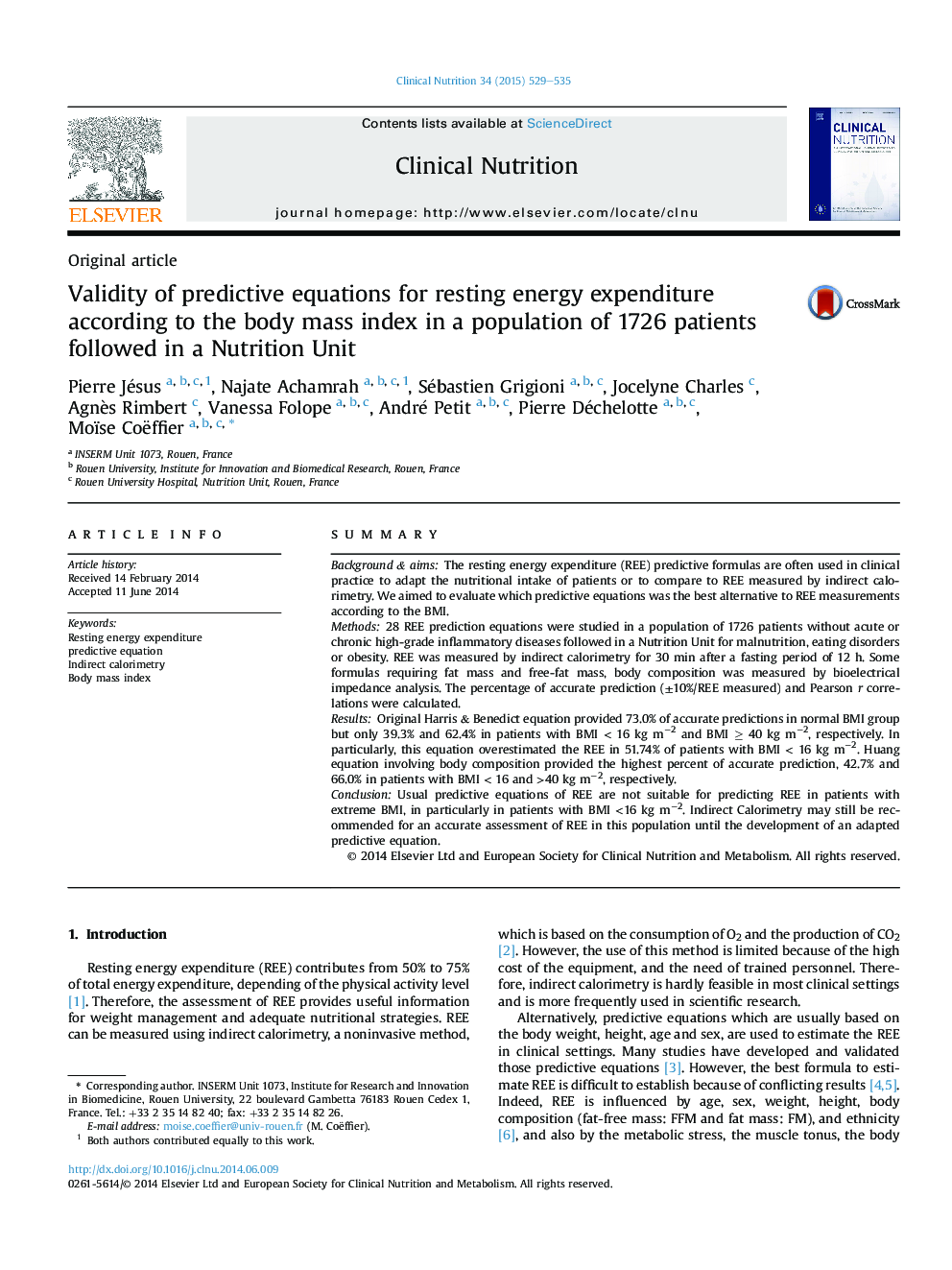| Article ID | Journal | Published Year | Pages | File Type |
|---|---|---|---|---|
| 5871760 | Clinical Nutrition | 2015 | 7 Pages |
SummaryBackground & aimsThe resting energy expenditure (REE) predictive formulas are often used in clinical practice to adapt the nutritional intake of patients or to compare to REE measured by indirect calorimetry. We aimed to evaluate which predictive equations was the best alternative to REE measurements according to the BMI.Methods28 REE prediction equations were studied in a population of 1726 patients without acute or chronic high-grade inflammatory diseases followed in a Nutrition Unit for malnutrition, eating disorders or obesity. REE was measured by indirect calorimetry for 30 min after a fasting period of 12 h. Some formulas requiring fat mass and free-fat mass, body composition was measured by bioelectrical impedance analysis. The percentage of accurate prediction (±10%/REE measured) and Pearson r correlations were calculated.ResultsOriginal Harris & Benedict equation provided 73.0% of accurate predictions in normal BMI group but only 39.3% and 62.4% in patients with BMI < 16 kg mâ2 and BMI â¥Â 40 kg mâ2, respectively. In particularly, this equation overestimated the REE in 51.74% of patients with BMI < 16 kg mâ2. Huang equation involving body composition provided the highest percent of accurate prediction, 42.7% and 66.0% in patients with BMI < 16 and >40 kg mâ2, respectively.ConclusionUsual predictive equations of REE are not suitable for predicting REE in patients with extreme BMI, in particularly in patients with BMI <16 kg mâ2. Indirect Calorimetry may still be recommended for an accurate assessment of REE in this population until the development of an adapted predictive equation.
